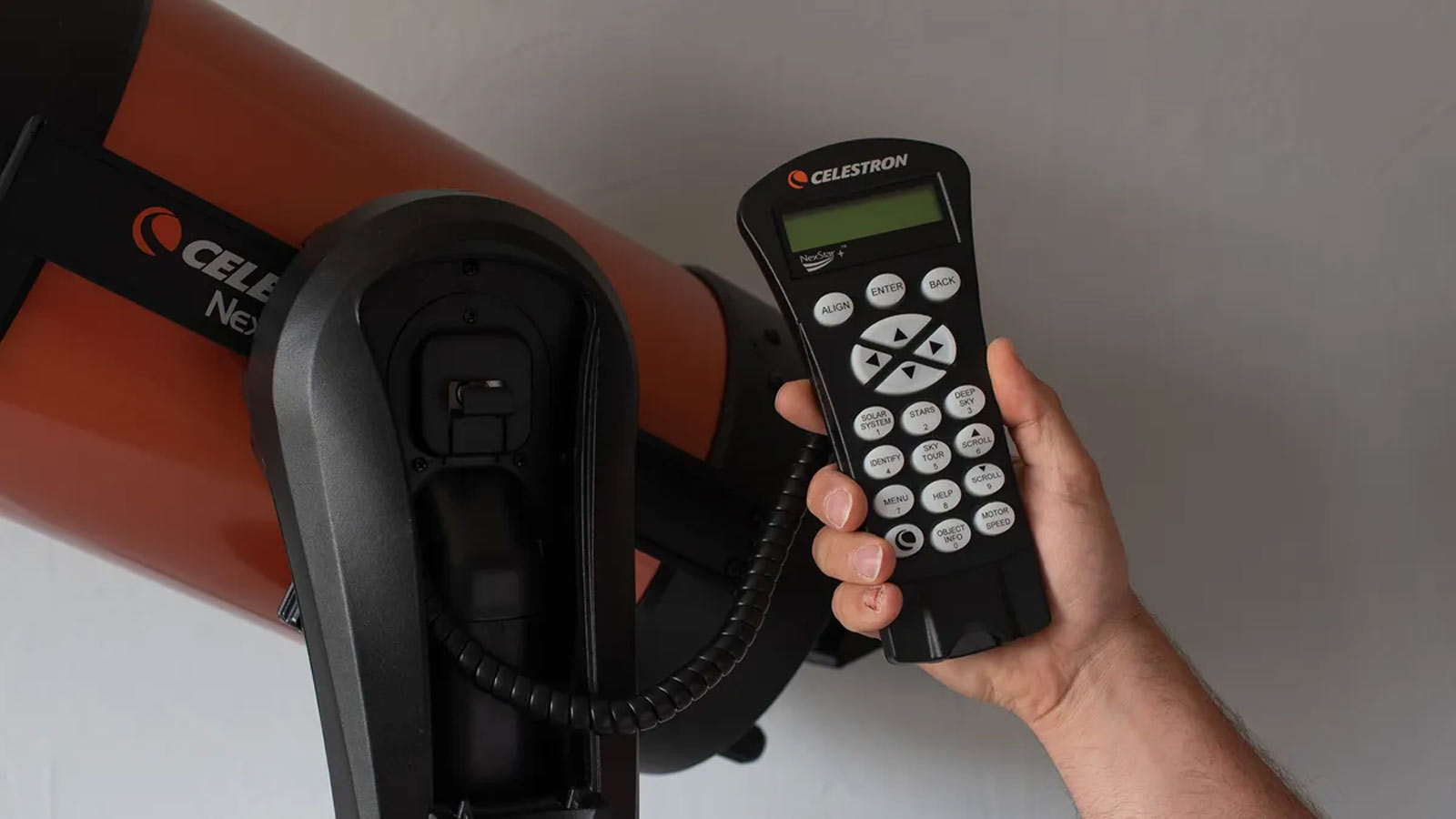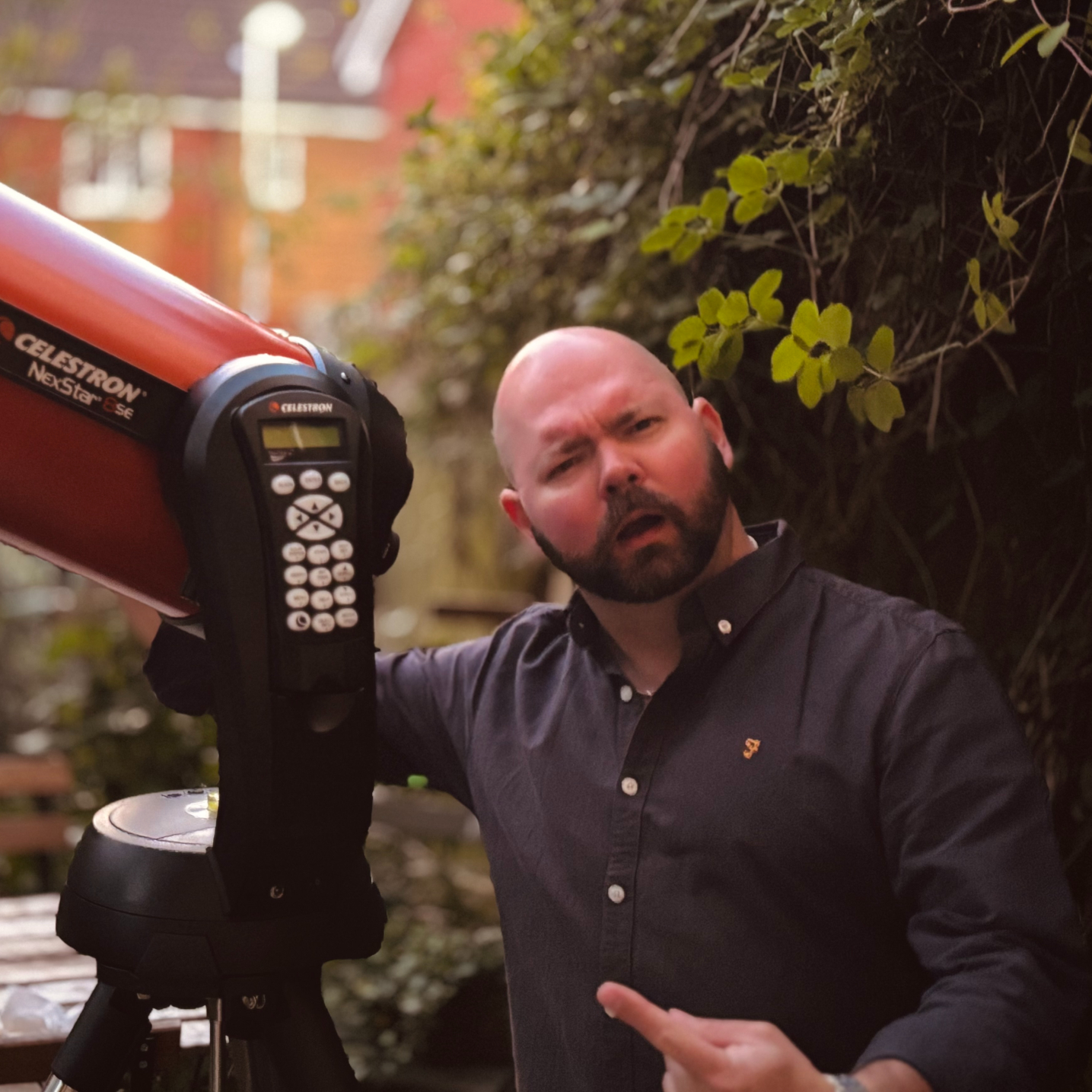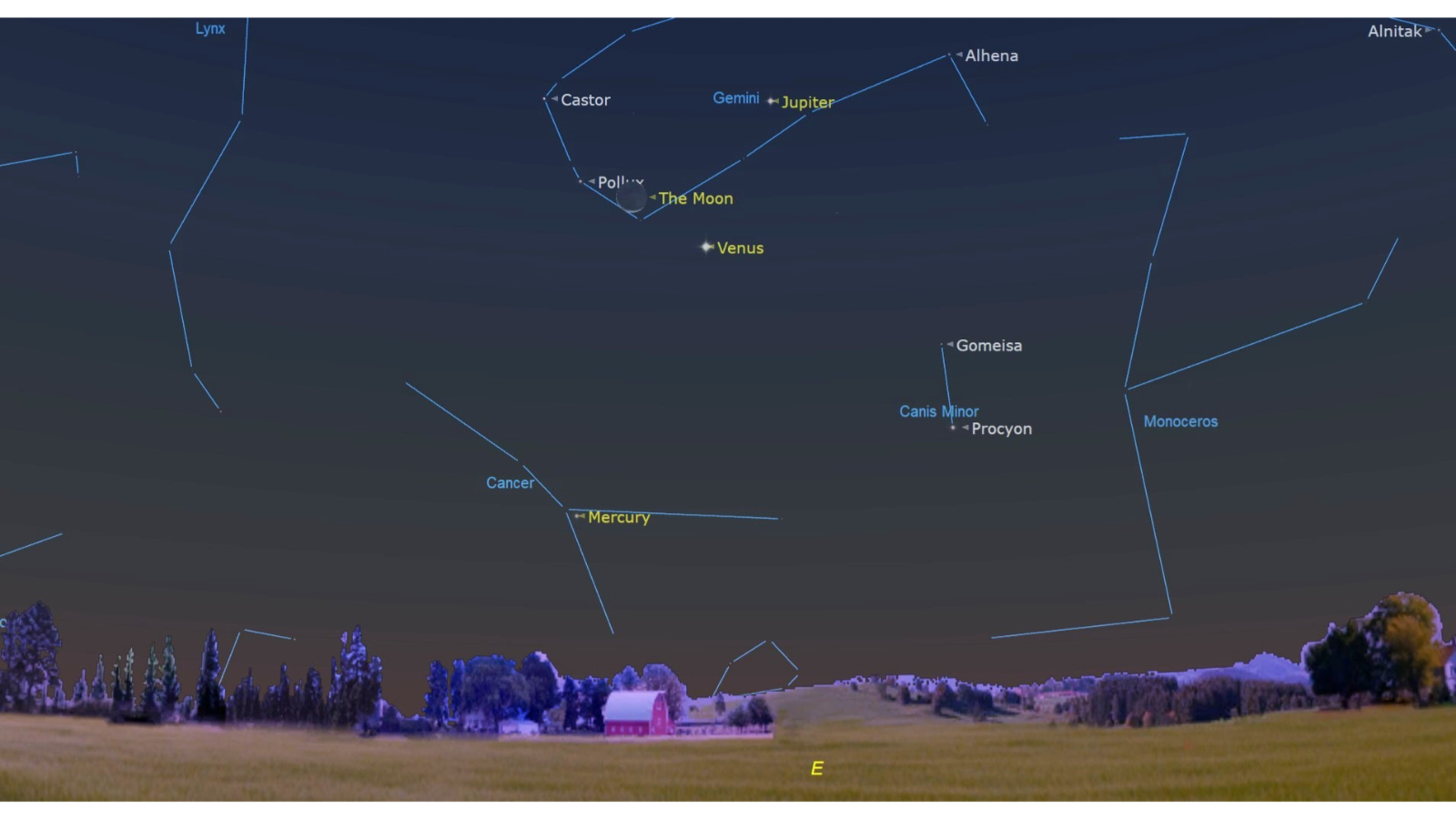See a razor-thin crescent moon join Jupiter and Venus in the predawn sky on Aug. 20
See the waning crescent moon rendezvous with Jupiter and Venus in the eastern sky on Aug. 20.

Look to the east in the hours preceding sunrise on Aug. 20 to see a thin crescent moon rendezvous with Venus and Jupiter to form a celestial triangle in the predawn sky.

Want to see the planets of the solar system for yourself? The Celestron NexStar 8SE is ideal for beginners wanting quality, reliable and quick views of celestial objects. For a more in-depth look at our Celestron NexStar 8SE review.
The 9%-lit waning crescent moon can be found roughly 15 degrees above the eastern horizon an hour and a half before sunrise on Aug. 20, embedded in the twinkling stars of the constellation Gemini.
Venus will be visible as a bright 'morning star' shining approximately 5 degrees to the lower right of the lunar disk, while Jupiter will sit less than 10 degrees to the upper right of the moon, forming the highest point of the cosmic triangle. Remember, the width of your fist held at arm's length accounts for roughly 10 degrees of night sky.
The bright stars Castor and Pollux will be positioned to the left of the moon in the early morning hours of Aug. 19. Mercury, meanwhile, will be visible close to the horizon, but will swiftly become lost in the glare of the sun, which rises at 6:11 a.m. ET (1011 GMT) for viewers in New York.
Viewing the cosmic trio with a 6-inch telescope will reveal the dark oval of the Grimaldi Basin impact site scarring the lunar surface, along with cloud bands on the surface of Jupiter, and the moon-like phases of Venus, under good atmospheric conditions.
The coming nights will see the wafer-thin lunar crescent sweep past Venus to join Mercury and the Beehive open star cluster in the constellation Cancer, the crab, ahead of its new moon phase on Aug. 23.
Stargazers looking for new equipment with which to explore the night sky should check out our roundups of the best telescopes and binoculars available in 2025. Photographers should also read up on our roundups of the best lenses and cameras for astrophotography.
Breaking space news, the latest updates on rocket launches, skywatching events and more!
Editor's Note: If you capture a picture of the crescent moon with Jupiter and Venus and want to share it with Space.com's readers, then please send your photo(s), comments, name and location to spacephotos@space.com.

Anthony Wood joined Space.com in April 2025 after contributing articles to outlets including IGN, New Atlas and Gizmodo. He has a passion for the night sky, science, Hideo Kojima, and human space exploration, and can’t wait for the day when astronauts once again set foot on the moon.
You must confirm your public display name before commenting
Please logout and then login again, you will then be prompted to enter your display name.

